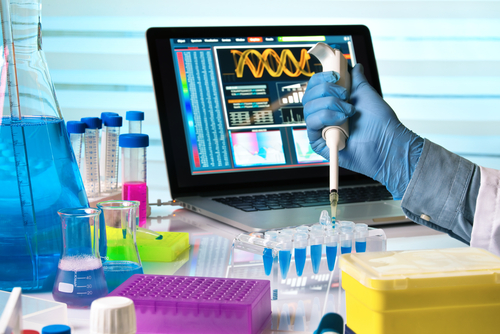EMA Names CRISPR-Cas9 Gene Editing Therapy an Orphan Drug for RDEB
Written by |

The European Medicines Agency (EMA) granted orphan drug designation to an investigational, and yet unnamed, potential therapy for recessive dystrophic epidermolysis bullosa (RDEB) based on CRISPR-Cas9 gene editing.
This designation confers certain incentives, including advice from the EMA during the development process, reduced or exempted fees and payments, and a decade of market exclusivity should the treatment be approved.
It is being developed by scientists at Universidad Carlos III de Madrid, Centro de Investigación Biomédica en Red en Enfermedades Raras (CIBERER) and the Energy, Environment and Technology Research Centre (CIEMAT), all in Spain.
RDEB is caused by mutations in the gene COL7A1, which codes for a protein called type VII collagen that is important for holding the different skin layers together. In Spain, one specific mutation (c.6527insC) accounts for approximately half of RDEB cases. This same mutation is also prevalent in Latin America, and it is thought to be the most common COL7A1 mutation.
Gene therapy approaches intend to correct the underlying genetic abnormality that causes a disease, most commonly using an engineered and harmless virus to deliver a functional version of the gene of interest to cells.
However, there are drawbacks to using viruses, most notably the possibility of inadvertently introducing other mutations into the genome. This is particularly a concern in RDEB, as individuals with this condition are at a high risk of skin cancer, and unintended mutations into cells can increase such risk.
Rather than a virus, the new approach uses CRISPR-Cas9 genome editing. Containing a guide RNA and a DNA-cutting enzyme called Cas9, this high precision tool intends to “cut out” the mutated part of the COL7A1 gene, enabling the production of a functional collagen VII variant and long-term skin regeneration.
But clinical use of CRISPR/Cas9 has been hindered by insufficient effectiveness. The research team in Spain used gene editing and tissue bioengineering to circumvent this obstacle. Its therapy combines safety with therapeutic efficacy, according to a press release.
Specifically, it is designed to delete exon 80 in the COL7A1 gene, chosen because the team saw “E80 as the host of a highly recurrent mutation in RDEB patients,” a 2019 study into its use noted. But, the scientists added, “our data provide strong proof of principle for a strategy that should be easily transferrable to other potentially dispensable exons. ” (Exons are the DNA bits containing information to make proteins.)
In that preclinical study using skin cells (keratinocytes) from an RDEB patient, the researchers found treatment restored production of collagen VII in over 80% of these cells. Edited cells were also transplanted onto mice, where they led to durable regeneration of healthy skin with no off-target mutations.





